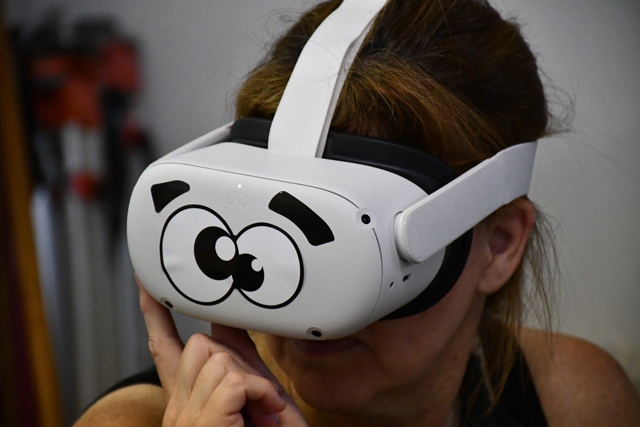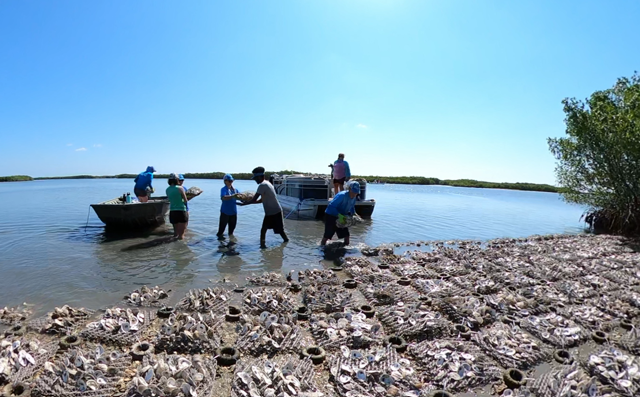University of Central Florida doctoral candidate Katherine Harris has spent the last several years assessing if Virtual Reality (VR) experiences can be used to increase community awareness, attitude and engagement for the restoration of threatened habitats, such as oyster reefs in the Mosquito Lagoon.
Harris calls her study “Oyster Reef Exploration: Assessing Virtual Reality as a Method of Science Communication.” The program is administered through outreach to community residents who wish to learn more about oyster reef restoration and how restoration benefits the lagoon.
The Oyster Reef Exploration VR study uses Virtual Reality as a method of science communication with the goal of increasing awareness of and engagement in oyster reef restoration projects in the lagoon using 360-degree videos of oyster reefs and oyster reef restoration. The videos display the restoration areas through fully immersive VR headsets.
Harris’ study is being conducted in two parts, with the first initiative comparing the VR oyster reef experience to in-school outreach activities (such as oyster habitat touch tanks) with middle- and high-school students. The study is designed to determine how VR impacts students’ knowledge retention and environmental attitude.
Already, her study has indicated that VR equally increases knowledge retention and impacts environmental attitude with live-animal touch tanks. Unlike touch-tank experiences, Harris has found that VR can provide individuals with the actual, first-person perspective of being in a specific habitat or ecosystem.
“This study demonstrates that VR is as impactful on student engagement and learning as hands-on, touch-tank experiences,” said Harris. “Therefore, in outreach situations where access to live animals is not possible, VR is a successful way to engage audiences in learning about oyster reefs and restoration.”
Her second ongoing study incorporates the VR oyster reef experience at volunteer restoration events – particularly land-based, material-making restoration events where volunteers may not have had the opportunity to see how their efforts positively impacted the lagoon in a long-term manner. Harris is looking to determine if including VR experiences at volunteer events could increase volunteer satisfaction.
According to Harris, preliminary surveys have shown that restoration volunteers at material-making events feel positively about their volunteer work, but are less certain about how they individually contribute to the lagoon ecosystem and whether their efforts have had any significant, long-term effect.
“The goal here will be to test if VR improves volunteer satisfaction by giving volunteers the opportunity to see the positive impacts of restoration from a first-hand perspective in VR,” Harris added. “I will be looking for volunteers to participate in this portion of the study, starting in early 2025.”
All volunteer VR engagement is utilized in connection to her ongoing research project, which is part of Harris’ Ph.D. research at the University of Central Florida under advisor Dr. Linda Walters.
“Once the research and data collection are completed and published, I plan to publicly release the VR experience for free use,” Harris said. “It will be made available to be used on a desktop computer or a VR headset.”
Content in the VR experience is appropriate for all ages. Harris notes, however, that immersive VR headsets are recommended for participants ages 13 and over.
For more information or to get your organization involved in this project, contact [email protected]





Follow Us!